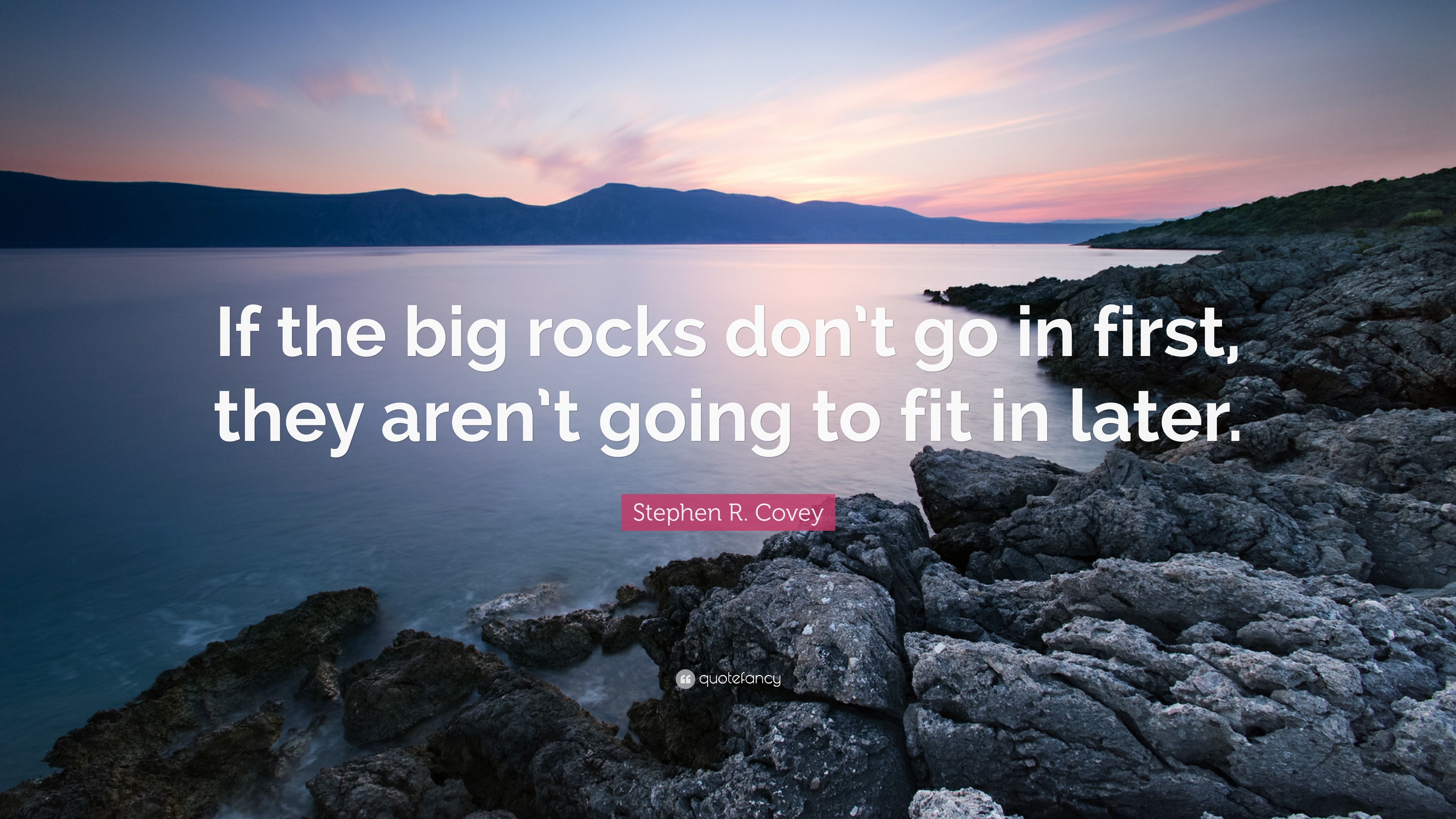


So today, will you identify your own BIG ROCKS? Will you make a list and take care of those rocks before you do anything else? What a way to honor Stephen Covey’s legacy – and build your own in the process. I may feel “productive” but would my productivity have an impact? I could cross twenty unimportant things off my list, leaving the one or two that would really make a difference undone. Without it, I could get sucked into the Facebook/Pinterest/ abyss.
#STEPHEN COVEY ROCKS PRO#
Making my health, my husband, and my children non-negotiable priorities followed by my most important projects (professional or personal) is a habit that serves me. Pro Tip:Consider using the Eisenhower Principle /Stephen Coveys Urgent/Important Quadrant to organize and categorize your big rocks, pebbles, and sand. One of my favorite stories from Stephen Covery is his story about the big rocks in life. His simple stories were insightful, inspirational, and actionable. I can’t tell you how often this has helped me as I face my own sandpile of to-do items. Stephen Covey was a masterful storyteller. Without that level of prioritization and focus, they may be squeezed out by far less important tasks. His analogy was simple in your day, put the big rocks in first – your family, your most important projects, your health. (Hint: Not many!) Then, he’d have her fill a second bucket STARTING with the big rocks, followed by the smaller ones, and ending by pouring in the sand, which sifted easily through the cracks to fill the spaces in between the rocks. He’d have a participant in one of his seminars fill up a bucket with sand and then see how many big and small rocks she could fit in. The idea of the Big Rock concept was made famous by Stephen Covey, author of Seven Habits of Highly Effective People. The seminar presenter pulled out a wide-mouth gallon jar and. “Seek first to understand, then to be understood.”Ĭovey famously illustrated that last gem with a demo using big rocks, smaller rocks, sand, and two buckets. In First Things First, Stephen Covey tells a story that one of his associates heard at a seminar. “Is my ladder leaning against the right wall?” I had almost forgotten how many of the little mantras I mutter throughout the day to keep myself on track came from him, a man I’ve never met in person, but whose words and ideas were so powerful I’ve carried them with me and made them my own. Perhaps more impressive, he was a father of nine, a grandfather of 52 and a great-grandfather of two! He died from complications of an injury he sustained while riding his bike this spring – at the age of 79. If you carried around a daily planner before the days of the smartphone, chances are it was a FranklinCovey version, through which he brought his time management system to life. Understand the importance of focusing on the big rocks when planning your day, week or even your year. Categorise your tasks, activities and responsibilities as big rocks, pebbles or water. He was the author of the highly acclaimed “Seven Habits of Highly Effective People” as well as “First Things First” and many other motivational books. Outline the key aspects of Dr Stephen Covey’s time management tool.


 0 kommentar(er)
0 kommentar(er)
